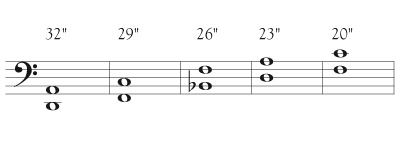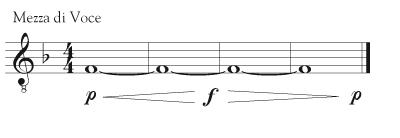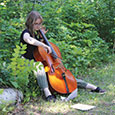The Midwest Clinic is the place to pick up new ideas to bring back to the classroom in January and beyond. A few of the master teachers, excellent conductors, and legends of the industry agreed to give us a sneak peek at their Midwest presentations.
Achieving Your Ensemble Sound
Chris Grifa
Wednesday, 10:30 a.m.
Make the Time for Fundamentals
To improve your ensemble sound, it takes time and dedication outside of working on your concert music. Music teachers should reflect on the goals they are trying to accomplish and the purpose of the exercises they are working on. By using the first part of rehearsal to actively engage students on exercises that reinforce posture, breathing, tone production, articulation, and releases on a daily basis, your group’s overall sound and confidence will improve. As your students’ understanding of these concepts increases, their hard work will begin to show in their concert music.
The Power of Sustains
One of the most impactful exercises that my groups do on a daily basis is a simple variation on a long tone. Most long tones are done to a specific tempo (usually slow) and for various count lengths. What I would like to suggest is a different approach to a long tone where students sustain one note for at least thirty to sixty seconds. Your students should be encouraged to breathe whenever they feel like their sound will suffer if they don’t take a breath, while focusing on playing with a full sound that is constant, steady, and free from tension. Sustaining a note for an infinite amount of time will allow students to listen to themselves and make adjustments to their sound. After holding a single note for up to a minute, a sixteen-count phrase should be a piece of cake. This exercise can be used to work on other important ensemble skills like balance and blend, as well as playing in a lyrical style.
The Common Sense of Common Core
David Kish
Wednesday, 10:30 a.m.
One of the Anchor Standards for Writing states that students should “conduct short as well as more sustained research projects based on focused questions, demonstrating understanding of the subject under investigation.” Instrumental music teachers can address this standard by asking students to answer focused questions about the music being prepared for the next concert. Students should compose the answers outside of class and submit them electronically (or in written form). Sample writing prompts might include some of the following:
What is Third Stream music, and who coined the phrase?
What is your favorite American folksong? Why?
Describe syncopation in your own words.
Do you like music in simple or compound time? Why?
List four possible ways in which composers vary a theme in music (Theme and Variation form).
What is a pentatonic scale, and how is it constructed?
Another Anchor Standard for Writing states that students should “write routinely over extended time frames (time for research, reflection, and revision) and shorter time frames (a single sitting or a day or two) for a range of tasks, purposes, and audiences.” Teachers can craft writing prompts that can be answered by the students in one sitting, or develop more complex questions that require extended time (perhaps a week or two).
Techniques to Evoke Creativity in Rehearsal and Performance
Carolyn Barber
Wednesday, 10:30 a.m.
The creative process is to the arts as the scientific method is to the sciences. For too long, and for perfectly understandable reasons, music educators have felt obliged to apply scientific principles (empirical measurement) to creative endeavors in an effort to justify a place in the core curriculum. Assessment in ensemble settings is typically reduced to measurement of fundamentally non-artistic elements, such as accuracy in decoding notation and participation (attendance). The inevitable result is Dr. Moreau-like hybrid that is acceptable in neither the artistic nor the scientific community. For the arts to gain a sure footing in the educational core, they must be taught in a manner that is rooted in the creative process. This is not a matter of teaching different things, it is a matter of teaching things differently.
One way to do this is by flipping questions 180 degrees. The creative process requires the development and exercise of divergent thinking skills. These skills are called into play when a person is faced with open-ended problems to solve. It’s the difference between asking for the correct fingering for F# (a closed, single-answer question) and asking students how many different ways they can produce an F# (an open, multiple-answer question). It is less efficient, but that is essential. A range of answers will be produced, among which some will be better than others. Choosing from a spectrum of possibilities to evoke a particular response is at the heart of artistic thinking.
Strategies for Improving Playing Position and Flexibility in Your Orchestra Students
Pamela Tellejohn Hayes
Wednesday, 12:00 p.m.
Poor position habits exist in every orchestra classroom. As teachers we must try to prevent these habits from developing, and try to remediate them when they do occur at any level. To keep tension to a minimum in the left hand, try to use as much of the fingerboard as possible from the beginning of instruction. This doesn’t mean actually playing notes in every position, but rather simply doing activities that require the students to venture out of first position. The late Paul Rolland developed some of the most effective exercises to accomplish this goal. Simply divide the fingerboard into three positions – low, middle, and high. Low position is defined as where first position occurs. Middle position is when the fourth finger is placed on the octave harmonic. High position is located as near the end of the fingerboard as possible. In high position violins and violas should leave their thumbs behind the neck, while cello and bass players move the entire hand.
Once these locations have been identified have students do activities such as left hand pizzicato, strumming across all four strings, and/or tapping the fingerboard with the left hand (keep fingers curved). Do various rhythm patterns such as four taps and four rests in one position, then move to another position and do the same thing. As the students become more comfortable with each activity, reduce the number of rests. This technique allows students to experience the entire fingerboard, so even though they are not playing actual pitches, they realize some of the future skills that will be needed. For violins and violas it also increases their awareness of a well-supported instrument. Remember, if a student stays in first position forever, tension develops in the left hand, which makes the skills of shifting and vibrato much more difficult to accomplish.
In Tune With Your Timpani
Ear Training and Sound Production Strategies for the Student Percussionist
William M. Shaltis
Wednesday, 12:00 p.m.
As a college teacher, one of most common deficiencies I see with my incoming students is the ability to tune timpani well. To quietly and efficiently tune the timpani, a student needs to possess the ability to hear pitches and recognize intervals and a replicable method for tuning at the timpani console. I first have my students practice hearing and singing intervals at a piano or keyboard percussion instrument. We start with the perfect intervals and use the following four-step process:
1. Sing and play the scale between the two pitches in the interval. For instance, if the two pitches needed are an F and a Bb, we sing and play F/G/A/Bb.
2. Sing and play only the interval (F/Bb).
3. Play a tonic drone and sing the scale between the two pitches. For instance, sustain the F while you sing F/G/A/Bb. Then sing only the interval against the tonic drone (F/Bb).
4. Play the first pitch. Without the aid of the keyboard, sing the interval. Check with the keyboard.
In addition to pitch and interval recognition, the student should know what pitches are possible on each drum and where those pitches are located. They should memorize the following chart so that they can tune most efficiently.

If a piece calls for F2 and Bb2, one could place the F on either the 32" or 29" timpano, where it would be in the middle and bottom of the range, respectively. For the Bb, one could use either the 29" or 26" timpano, where it would be located towards the top and at the bottom of the ranges, respectively. To tune the timpani, they use what I call the Ballpark Tuning Method:
1. Start with the head completely detuned (pedal heel down, toe up)
2. Using a tuning fork, hum or audiate the first pitch needed.
3. Lightly strike the head with a finger or mallet once.
4. Tune up to the pitch needed.
5. Hum the next pitch needed based on the timpano that was just tuned and follow the same procedure.
With practice, students will become more confident with their tuning and will also be able to adjust their intonation with the rest of the band or orchestra. They will also begin to make pitch placement decisions for musical reasons and not just for convenience. At your next rehearsal, watch how the drums are tuned and listen to the resultant tone. The more critical your percussionists are of their timpani tone, the better overall sound quality of your ensemble.
Boost Your Technology Chops
Keith Ozsvath
Wednesday, 12:00 p.m.
For directors looking for an alternative to traditional assessment methods, video assessments are a viable option. Rather than using precious rehearsal time for individual assessments, directors can watch, listen, and critique videos of their students performing playing tests at their convenience. It is an effective tool to assess playing skills like note and rhythmic accuracy, technique, fingerings, articulations, and dynamics.
To record a video on the Chromebook, students will need to download a Chrome browser extension called Screencastify. It is free and can be accessed in the Chrome Web Store (https://chrome.google.com/webstore). Once installed and set-up, students can select the Cam option to record using the front-facing camera on the Chromebook. Mic level settings can be adjusted for optimum recording levels and videos can be saved to Google Drive. It is important to instruct your students to save their video as “unlisted” for privacy purposes.
Students will find it easy to record and submit their performance videos. So much can be learned from viewing and listening to students perform individually. My students often share with me how much time they spend recording their playing tests in order to record them perfectly. Below are a few more helpful suggestions and advantages to ensure you and your students have a good experience with video assessments.
• Take your time when teaching your students to install and set-up the Screencastify extension.
• Review again when assigning a playing assessment.
• Practice recording a sample video in class and submitting to Google Classroom or emailing the video link.
• Provide written instructions to your students for recording with Screencastify.
• If your school does not have Google Classroom, students can email you a link to their video.
• Create a rubric to grade the assessments. Quality feedback is essential to growth.
• Brass players should focus the bell of their instrument away from the microphone for better audio quality.
You Are the Band Whisperer
David Morrison
Wednesday, 12:00 p.m.
Twenty band directors visited my high school band rehearsal several years ago. At the time we were preparing Russian Christmas Music for a winter holiday concert. After 20 minutes or so, one of the band directors raised his hand and asked the question, “How can your band play so well in tune, when you never work on intonation?” The answer in my mind was clear; fine intonation had become a way of life in our group. The students possessed intonation tools, they learned the craftsmanship necessary to apply those tools, and they operated with the momentum required to apply the tools to new situations, even when they weren’t specifically instructed to do so. In light of the above discussion, I created a set of step-by-step instructions for music educators at all levels of expertise to ponder, follow, react to, and generally adopt in some form, in order to improve both teaching and learning with their ensembles. I believe that with the right tools and the necessary skills to apply them, teachers can move mountains.
In my mind, a tool is a piece of information, an exercise, or a strategy that a music educator uses to address challenges with an ensemble or an individual musician. Just as a craftsman uses physical tools to shape and mold physical products, a music educator uses intellectual tools to produce and refine musical structures. Whichever way the conductor thinks of them, these tools serve two important functions in rehearsal: They assist the musicians in an ensemble (conductor and players) to construct a new piece of music from the ground up, and they aid in the maintenance, repair, and continued improvement of an already completed piece of music.
The terms assist and aid are important, because these are all that tools are capable of accomplishing; the real value of tools relies on the skill of the person using them. Having struggled with many home improvement tasks over the years, I have come to the understanding that good tools do not necessarily make good craftsmen, as the tools are necessary but not sufficient for producing outstanding results. The good news is that everyone, regardless of age or skill level, can improve in this area. All it takes is a willingness to keep trying, to make mistakes, and to learn from those mistakes.
The following, more specific, example of my Universal Teaching Method further illustrates the relationship between tools, craftsmanship, and momentum, and how they are applied in a classroom:
1. Identify, locate, and prioritize a problem. For example, something sounds sour in the low brass area and seems to be coming from the trombones. The section has a major triad, and the third of the chord is sharp. If this can be addressed successfully, the pitch of the ensemble will noticeably improve to the point where further refinements will be possible.
2. Articulate this to the trombone section. “Trombones, you have a pitch problem on this major chord. Can you hear it also?”
3. Provide a tool for the students to use. “Did you know that the third of a major chord has to be played flat in order to sound in tune? Who has the third of this chord? Let’s build that chord from the bottom up and see what we can do.”
4. Guide students through use of the tool. Ask the person with the root to play, then add the third. When it is played sharp (it usually is), keep asking the player with the third to move the slide out until it locks into pitch with the root. Then add the fifth.
5. Check for understanding. Once the adjustments are made, and the chord sounds good, ask the students if they can hear the difference.
6. Encourage and empower the students to apply the tool called “lower the third of any major chord” to all of the major chords that they perform. Asking students to maintain momentum by frequently reminding them to use the tool on their own creates a self-correcting culture within the ensemble.
7. Repeat steps 1-6 as you hear similar problems crop up in rehearsal.
Building Virtuosity in the Brass Section
Raquel Rodriquez
Wednesday, 1:15 p.m.
Brass players must practice fundamentals daily to maintain a certain level of proficiency as well as developing virtuosity. These fundamentals include tone, flexibility, articulation, finger/ slide dexterity, and range. Turn-of-the-century virtuosic theme-and-variation solos can be a great resource for teaching the fundamental aspects of brass playing. Using virtuoso solos to complement fundamentals can give the practice session purpose, makes practicing more enjoyable, and can serve as a key motivational strategy.
These solos can also aid in teaching musicality, rhythms, and ensemble techniques. The use of brass solos after brass fundamental work can give students an opportunity to put the technical aspects that were practiced in a more musical setting. Solos can also contribute to an increased sense of motivation for students. Solos are fun and contain advanced technical aspects that require outside work (i.e. fundamentals). Students will need to master a high level of proficiency in their technique to play the pieces. In addition, intrinsic results are more immediate with solos than when practicing dry fundamentals.
Finding new innovative ways to practice is essential as we are bombarded with social media and other distractions. Continuing to find creative ways for students to learn will contribute to an increased interest in music education. Some ideas to incorporate is using a popular cornet solo like Frank Simon’s “Willow Echoes” in conjunction with flexibility exercises, tonguing exercises (triple tongue), and range studies. This would be an appropriate solo for an advanced high school trumpet student. Giving students a solo to work on with fundamentals allows them to see the results in a more concrete manner that will assist in motivation. There are many of these theme and variation solos that can be used in this manner, try collecting a few of these solos to use with specific fundamental aspects with your students.
Establishing the Bottom Line
Christian Carichner and Kevin Sanders
Thursday, 8:30 a.m.
“Drop your jaw and open your throat.” These two phrases have entered the folklore of low brass playing, but often they create problems that hinder the desired result of an open, full sound. Instead of addressing the jaw, one should focus on the tongue placement, working to keep the tongue as flat as possible. A good tip is to tell students to use only one taste bud to articulate. As for the throat, encourage players to think about a relaxed throat that allows for the player to sigh through the horn.
Sound Production
On Percussion Instruments
William James
Thursday, 10:30 a.m.
Unfortunately, there is a tendency to be happy with percussionists as long as they play the right rhythm at the right time. We would never accept this from a trumpet player. Sound is a concept discussed on day one with almost every other instrument and yet it is something rarely talked about with percussionists. Here are two of my favorite tips for improving sound on percussion instruments.
Snare Drum
A simple touch-up once a month will keep your drum sounding brand new. I try to keep my top head sounding roughly an A, which will probably be much higher than most directors are used to. It is easier to hear this pitch with the snares off. After I tune the top head I tune the bottom and make sure it sounds a second or third higher than the top. The bottom head is just as important as the top, as it controls your snare response.
Once the heads are tuned, I tune the snares. Start with the snares so loose that when you turn the snares on they still do not touch the head. Then slowly tap on the drum as you tighten the snares. At first the drum will sound very wet but as your tighten the snares it will become crisper. If you tighten the snares too much, the drum will sound choked. Loosen them a little and find that happy medium where the drum is nice and crisp. This five-minute process once a month will keep your drum sounding like you just bought it.
Articulation
Articulation terms are something every wind player is familiar with. If you ask a clarinetist to play a note with a soft articulation, he will respond accordingly. Use these same terms with percussionists. It may take a few attempts as this will be new, but everyone understands the sound you are requesting. Instead of dumbing it down for percussionists, speak in the same terminology you would to a wind player. When a bass drum passage needs to be dry and punchy, say exactly that. Do not just request a harder mallet; that doesn’t fully explain what you want. This also puts a little control in the percussionists’ hands to be creative. Instead of being told exactly what mallet to use, let them try and figure it out. Even if their first guess is wrong, they will probably realize this quickly and can search for something more appropriate. This freedom and imagination will create more expressive percussionists instead of players with a goal of simply hitting the right instrument at the right time.
Rehearsal Strategies
Benjamin Lorenzo
Thursday, 10:30 a.m.
The most important part of the rehearsal process actually begins before setting foot on the podium. Selecting music for students to play is perhaps the most important decision directors make. It goes far beyond a single concert or semester; it is the curriculum, and determines the course of the students’ development as musicians. In addition to enriching the musical lives of students, the music selected for them to rehearse and perform defines an individual’s values as a musician. Besides the long-term benefits, one can design exercises to develop fundamentals during the warm-up period of rehearsals. Having exercises that directly apply to the music makes rehearsals more productive and engages the students. Selecting the right music to rehearse and perform will make a dramatic impact on the rehearsal process—not only in the short-term, but the long-term development of the conductor and students.
Using Technology to Improve Listening and Engagement in Music
Kathleen Melago
Thursday, 10:30 a.m.
I spend many hours each summer visiting sites, downloading apps, and pondering how useful various offerings could be for my students and my students’ future students. I have found some enjoyable and inexpensive ways to bring technology to instrumental programs in ways that are not trite attempts to just use technology to use technology. In this clinic, I will be presenting several practical ways to use technology, including free and low-cost apps and websites, to improve student learning and engagement and to manage assessment in performance-based instrumental courses.
Principles of Melodic Interpretation
Leslie W. Hicken
Friday, 8:30 a.m.
To produce expressive melodic intervals, it is helpful to imagine a great violinist making a melodic leap in either direction of an octave in an expressive passage. The technique that they use to connect the notes of the interval is called portamento. However wind players cannot slide into these upward pitches. We can connect these notes by increasing the air pressure on the first note and allowing the subsequent note to appear as a result of the airflow. A good way to teach this principle is to play diatonic intervals up and down from tonic. What you are listening for is a strong first note that leads to the second pitch of the interval achieved with no break in the sound. Additionally, you do not allow the upper note to crescendo out of context relative to timbre or dynamic. This is a powerful principle to enhance expressive melodic interpretation.
Flipping the Classroom
James Spinazzola
Friday, 1:30 p.m.
Flipping the classroom is an approach to teaching in which students gain initial knowledge before each class, and class time is used to assimilate, process, and apply that knowledge through activities focused on active learning. I believe every ensemble rehearsal should ideally be a flipped classroom: students should learn their part outside of class, and class time should be used to assimilate those parts, to learn how each part functions within the score, to listen, and to collaborate.
It is useful to begin by presenting pre-class instruction through electronic media. For example, teaching demonstrations and information about composers, pieces, and musical concepts can be disseminated through pre-recorded lecture videos using technology such as Panopto. Curated recordings, copies of the score (particularly useful with chamber music), links to online videos, and other resources can be posted on Blackboard or similar platforms. An ensemble blog is an effective tool when used to stimulate conversation about the music, or to post rehearsal footage along with questions designed to focus students’ attention. To coach individuals and incentivize their preparation before class, ask them to record assigned passages and submit them via email or the ensemble blog, and then reply with comments. In a less technological application, consider writing pithy instructions on index cards and placing them on students’ stands before rehearsal.
What You Need to Do Now
Before You Start Your First Job
George Boulden
Friday, 3:00 p.m.
Managing an account at your school or local bank doesn’t have to be a daunting task, but knowing some basic money management skills can ensure that your program is financially solvent. I always tell my music education students that there are really only two rules for surviving and thriving in the classroom. Rule #1 is don’t touch the money. I am always disheartened to hear of a music program that has been purged by a director or booster. So many programs struggle to exist from year to year and when this happens it leaves many groups devastated both financially and emotionally. As a student, take the time to talk to teachers in your area of expertise and find out how they deal with the duty of collecting money and maintaining an account for the their program. Every school district is different, but having some knowledge of how to be fiscally responsible will help you establish the foundation for establishing a transparent and fiscally sound music program.
As well as fiscal responsibilities, you will be held accountable for handling the paperwork associated with your position. In my time as an educator the level of paperwork has increased dramatically, and I have seen colleagues become overwhelmed by the sheer volume of emails, forms, performance requests, and field trip requests that cross their desk every day. My best advice for you as a student is to develop a system for managing paperwork now. It begins with how you handle your schoolwork, personal affairs, and work life.
The Instrumentalists Guide
To Conducting Choirs
Derrick Fox
Friday, 3:00 p.m.
Teaching both band and choir has become a reality for many music educators, but walking into a room full of singers without much vocal pedagogy experience can be a daunting task. Instrumen-tal music educators who find themselves in this situation do not have to start from scratch but can maximize instruction by using instrumental techniques and exercises that can be effectively translated into the choral rehearsal. Employing lip trills (mouth piece buzzing) and singing long tones with dynamic contrast (mezza di voce) with your choral singers will aide in developing breath management and improving tone quality.






